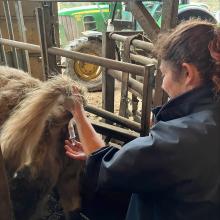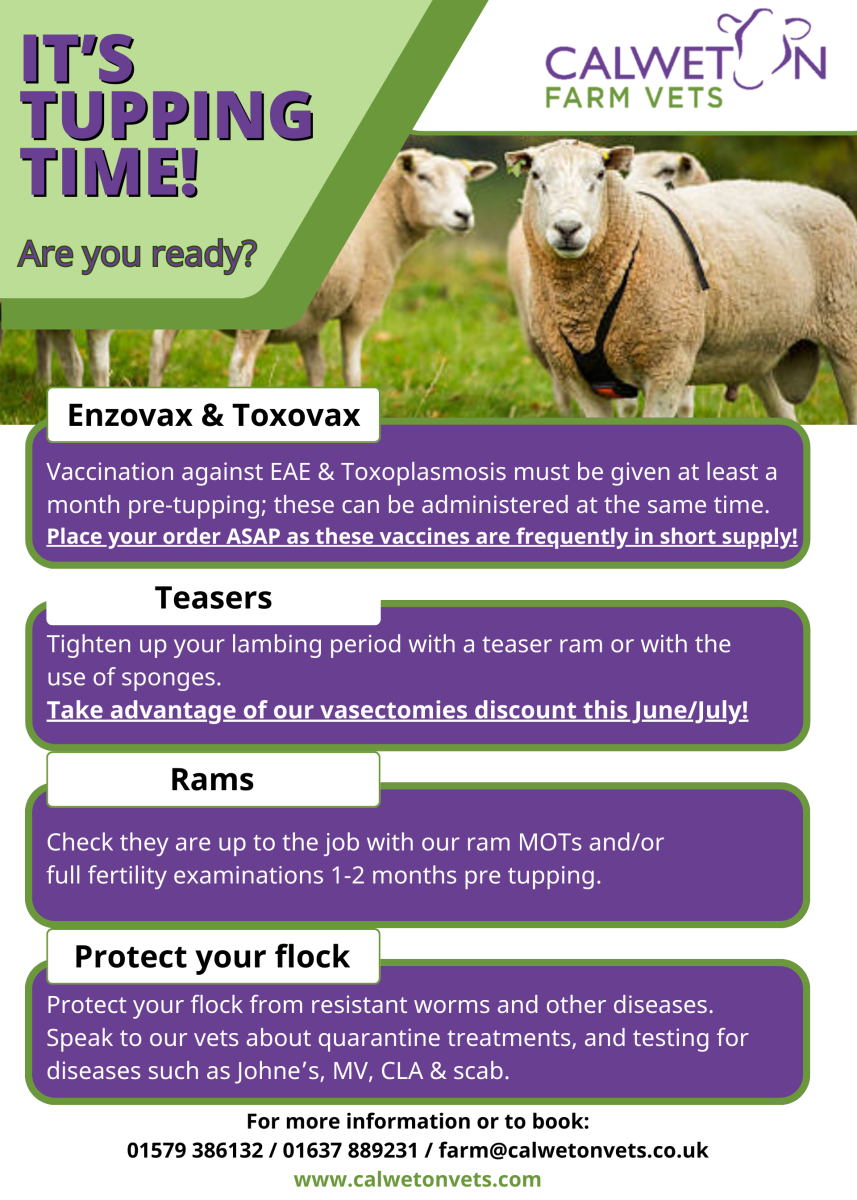You are here
News

Animal Health and Welfare Pathway
The Animal Health & Welfare Pathway (AHWP) launched in the Spring of 2023 and continues to run. We have now carried out many visits, with clients successfully claiming and receiving funding. If you haven’t yet applied, it isn’t too late to get involved!
The funding is available for all Basic Payment Scheme (BPS) eligible farms with at least 11 cattle or 21 sheep. Initially the funding will be for a single species: £436 for sheep, £522 for beef or £372 for dairy herds.
Parasite Forecast June
Nematodirus and Blowfly risk is now HIGH.
The risk of parasitic gastroenteritis can be assessed with a combination of worm egg counts, growth rates and flock appearance. There is no need to gather animals in order to collect worm egg count samples.
Funding for drench efficacy checks is still available as part of the Animal Health and Welfare Pathway.
Coccidiosis can cause issues in 4-8 week old lambs and calves, especially in areas where animals congregate.
Animal Health and Welfare Pathway update
May 2024 has brought a new announcement regarding the Animal Health and Welfare Pathway.
Simply put: the review is a fully funded vet visit that happens on a yearly basis. During the review, keepers of cattle, sheep and pigs can access bespoke health and welfare advice and test for endemic diseases and other conditions using a vet of their choice.
The current offer is:
£522 for a beef cattle review
£372 for a dairy cattle review
£436 for a sheep review
In addition to this, there is a further offering:
Parasite forecast May

Nematodirus risk to this season's lambs is now high
Blowfly risk is medium
Coccidiosis risk is highest with high stocking rates and with congregation sites eg troughs
Worm egg counting season has begun - for all species!
Parasite forecast - April
The Nematodirus risk has been increased to high, as eggs from last year's lambs are now likely to be at peak hatch. Lambs grazing high risk pasture (grazed by lambs last season) should be treated with white drench, as this remains effective even if this wormer group is no longer effective on your farm for other worms.
Worm egg counting will help decide whether or not treatment for other worms is necessary - start testing lambs from around 8wks old.
Parasite Forecast - March
Nematodirus risk has been flagged as amber, as air temperature has already been high enough (11.5 – 17° C) for Nematodirus development this year. Once a 7 full days in this temperature range have passed, eggs are fully developed and hatch on pasture.
If lambs are grazing pastures grazed by last year’s lambs be vigilant for signs (straining, watery diarrhoea) and treat with WHITE drench.
Parasite Forecast - February
Lungworm
Although disease is not typically seen until the summer, vaccination needs to be carried out well in advance of the risk period to ensure immunity. Lungworm vaccination offers sustainable control of this parasite - sustainable both in terms of prolonging the effectiveness of wormers on your farm, and by avoiding decimating the population of invertebrates that are essential for soil health.
First season grazing cattle receive 2 doses, 4 weeks apart, 2 weeks before exposure (usually before turnout).
Vaccine hub: Lambivac
Our next Lambivac Vaccine Hub dates should correspond with most clients' 6-monthly herd booster, in April and October.
We will be opening a Lambivac bottle on Friday 19th April. The bottles will be opened at 9am and will be required to be kept refrigerated and administered by 5pm on the same day.
If there is a requirement for it (for part one of a primary course for previously unvaccinated goats, or females in late pregnancy), we will open a further bottle PRIOR to this on Friday 22nd March.
Heptavac availability and Vaccine hub
It's the time of year again to vaccinate in-lamb ewes with Heptavac P to protect against Clostridial disease and Pasteurella pneumonia.
We currently have a limited availability of 50 dose bottles in stock. These will be sold on a first come first served basis.
For any clients requiring only a few doses, we will also be splitting bottles for a Vaccine Hub on Thursday 8th February and Thursday 7th March.
